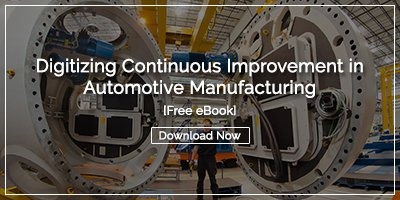 Imagine a world where every production process flows seamlessly, like a well-orchestrated symphony, eliminating bottlenecks and delays. This is the world of continuous flow manufacturing, a revolutionary approach that has left an indelible mark on the industrial landscape.
Imagine a world where every production process flows seamlessly, like a well-orchestrated symphony, eliminating bottlenecks and delays. This is the world of continuous flow manufacturing, a revolutionary approach that has left an indelible mark on the industrial landscape.
Continuous manufacturing isn't just a process; it's a mindset that challenges the status quo and drives organizations to redefine what's possible. Its impact is felt not only on the factory floor but also throughout the supply chain, positively affecting the bottom line and ultimately delighting customers with products that are both efficient and of the highest quality. It's a transformation that promises a brighter future for manufacturing and the world that relies on it.
What is continuous flow manufacturing?
Continuous flow manufacturing is a production method where products move continuously through the manufacturing process with minimal interruption or waiting times. It aims to maximize efficiency, reduce waste, and maintain a consistent flow of materials and work.
The continuous flow process has its roots in the early 20th century with the advent of the assembly line and the work of manufacturing pioneers like Henry Ford. Ford's innovative approach to automobile production, known as the "moving assembly line," allowed for a continuous flow of work, reducing the time required to build a car from over 12 hours to just 93 minutes. This revolutionized the manufacturing industry, making automobiles more affordable and accessible.
In the 1930s, Toyota in Japan further refined the concept by introducing the Toyota Production System (TPS). TPS emphasized the reduction of waste, or "muda," and focused on achieving a continuous flow of production by implementing principles like Just-In-Time (JIT) and Jidoka (automation with human intervention). This not only improved efficiency but also quality.
Continuous flow manufacturing continued to evolve, incorporating Lean principles and automation technologies. Today, it is supported by value stream mapping software. It plays a pivotal role in various industries, from automotive to electronics, pharmaceuticals, and beyond, enabling organizations to deliver higher quality products with greater efficiency while minimizing waste and costs. The concept of continuous manufacturing, often used within the Lean manufacturing process, has truly transformed the way goods are produced and remains a cornerstone of modern industrial practices.
Continuous Flow Processes vs. Batch Manufacturing
Continuous flow processes and batch manufacturing are distinct production methods, each with unique characteristics and advantages.
Batch manufacturing involves producing a specific quantity of items at one time. The production process is divided into contained stages, each completing a batch of products before moving to the next. This means batch manufacturing can be less efficient, especially for small batch sizes, as it involves setup and changeover times between batches. Batch manufacturing may lead to higher inventory levels, as products are produced in batches, and there may be waiting times between batches.
The main advantage is that batch manufacturing offers more flexibility, making it easier to accommodate changes in product specifications between batches. It is most suitable for products with variations or customization within each batch.
On the other hand, in continuous flow processes, production occurs constantly and uninterruptedly. Products move through the entire production process without stopping until the process is complete.
Continuous flow processes are highly efficient, as they minimize downtime, reduce setup times, and optimize the use of resources. They are ideal for high-volume production of standardized items.
Why is continuous production important in the manufacturing process?
Continuous flow manufacturing offers several significant benefits, contributing to its popularity in various industries. Here are some of the key advantages:
Efficiency and productivity improvements
Continuous flow manufacturing minimizes downtime, reduces setup times, and optimizes the use of resources, leading to higher production efficiency. This results in faster production and lower lead times.
Quality and defect reduction
Real-time quality control and immediate issue resolution help maintain a consistently high product quality. Defects are detected and addressed promptly, reducing the risk of producing subpar products. With other manufacturing methods, quality control is typically performed at the end of each batch, which may result in the detection of defects after a significant number of products have been produced.
Inventory and cost savings
Continuous flow manufacturing often results in lower inventory levels because items are produced as needed, reducing the need for stockpiling finished goods. Reduced waste, increased efficiency, and lower inventory levels lead to cost reductions in various areas, including labor, storage, and material handling.
Employee satisfaction and engagement
Continuous processes can enhance employee satisfaction and engagement by providing a structured and optimized work environment. With well-defined tasks and responsibilities, employees become experts in their roles, increasing their confidence and job satisfaction.
Real-World Examples
Continuous production requires strong leadership and a commitment to constant improvement. Here are four case studies of companies that successfully implemented continuous flow manufacturing.
Case Study 1: Boeing
Boeing, a leading aerospace manufacturer, applied continuous flow manufacturing principles to the production of its 737 aircraft. They adopted assembly line techniques and implemented a continuous flow production system.
Continuous flow manufacturing at Boeing led to a significant reduction in aircraft production time, increased production capacity, and improved product quality. The company realized cost savings through reduced labor and resource waste. This implementation allowed Boeing to meet the growing demand for its aircraft while maintaining quality standards.
Case Study 2: Harley-Davidson
Harley-Davidson, the iconic motorcycle manufacturer, embraced continuous flow manufacturing to streamline its production process. They applied Lean manufacturing principles to their assembly lines.
The adoption of continuous flow manufacturing at Harley-Davidson resulted in shorter lead times, reduced inventory, and improved worker efficiency. The company achieved cost savings, reduced the need for process materials, and increased flexibility in producing customized motorcycles. This approach enhanced their competitiveness and customer satisfaction.
Case Study 3: Nestlé Waters
Nestlé Waters, a division of Nestlé Group, implemented continuous flow manufacturing in bottling and packaging facilities. They optimized their production lines to ensure a constant flow of bottling and packaging operations.
Continuous flow manufacturing significantly increased production efficiency, reduced downtime, streamlined the use of raw materials, and minimized the need for excessive bottled water storage. Nestlé Waters experienced cost savings and improved overall production output. The company could adapt quickly to changes in demand and offer products with more remarkable freshness.
Case Study 4: Johnson & Johnson
Johnson & Johnson, a multinational healthcare company, applied continuous flow principles to its pharmaceutical industry manufacturing processes. They implemented Just-In-Time (JIT) inventory management and continuous improvement practices.
Continuous flow manufacturing at Johnson & Johnson led to reduced lead times for pharmaceutical production and improved batch-to-batch consistency. The company benefited from lower inventory carrying costs, decreased waste, and enhanced product quality. This approach enabled them to respond more effectively to market demands and regulatory changes.
In all these cases, the implementation of continuous flow manufacturing principles significantly enhanced operational efficiency, reduced waste, improved product quality, and led to cost savings. These companies were better equipped to meet changing market demands, reduce production times, and enhance their competitiveness within their respective industries.
Conclusion: The Path Towards Effective Continuous Flow Manufacturing
Continuous flow manufacturing has a profound impact on industries, enhancing operational efficiency, minimizing waste, and improving product quality. It significantly reduces production lead times, enabling faster throughput and shorter cycle times, resulting in cost savings and improved customer satisfaction. By eliminating bottlenecks and delays, it lowers the need for excessive inventory, reducing carrying costs and the environmental footprint. Continuous flow manufacturing empowers employees by involving them in quality control and fostering a sense of ownership, ultimately leading to higher job satisfaction and engagement.
The future of manufacturing is poised for a transformation driven by digital technologies and automation. Continuous flow manufacturing will play a pivotal role in this evolution, aligning perfectly with the need for efficiency and sustainability. Through the seamless, waste-reducing, and quality-focused principles of continuous flow, manufacturers can adapt to changing consumer demands, minimize environmental impact, and remain competitive in the era of Industry 4.0.
To learn more about how continuous-flow manufacturing can transform industries and lead to operational excellence, we recommend the following popular resources:
"The Toyota Way: 14 Management Principles from the World's Greatest Manufacturer" by Jeffrey K. Liker - This book delves into the principles and practices of Toyota's continuous flow manufacturing, offering insights into how the company became a leader in efficiency and quality.
"Lean Thinking: Banish Waste and Create Wealth in Your Corporation" by James P. Womack and Daniel T. Jones - This influential book explores lean manufacturing principles, including continuous flow, and provides a framework for eliminating waste and improving processes.
"Creating Continuous Flow: An Action Guide for Managers, Engineers & Production Associates" by Mike Rother and Rick Harris - This practical guide focuses on implementing continuous flow manufacturing in various industries, offering tools and strategies for process improvement and waste reduction.
If you'd like to chat about how process improvement technology can help you optimize your continuous flow manufacturing processes, our team of experts is standing by. Contact us to learn more.



Add a Comment